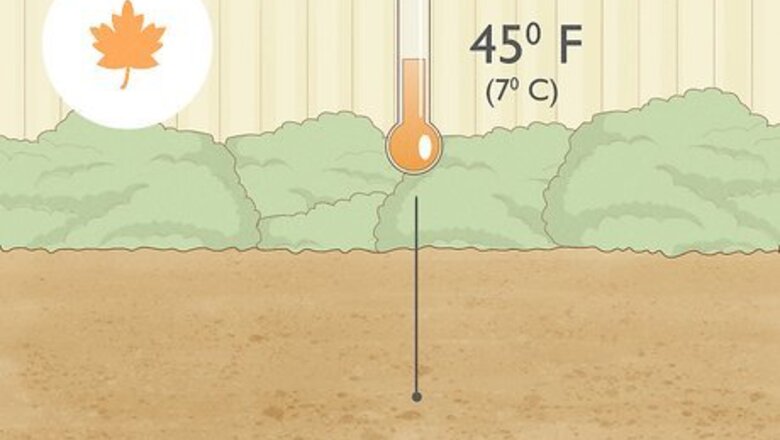
views
Planting the Potatoes
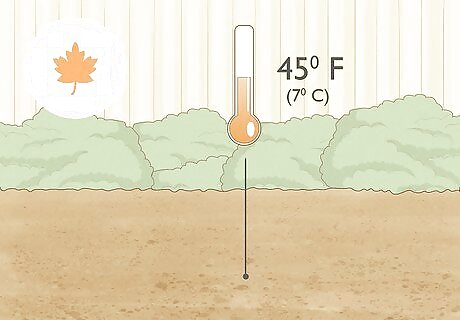
Choose the right time to plant. Because potatoes are a cool-weather crop, they can be planted in fall and grown over the winter in warm climates where the ground doesn’t freeze. In cooler climates where the ground does freeze in winter, potatoes should be planted two weeks after the last frost. Potatoes won’t start growing until the soil temperature reaches 45° F (7° C), so don’t plant the seed potatoes before the last frost.
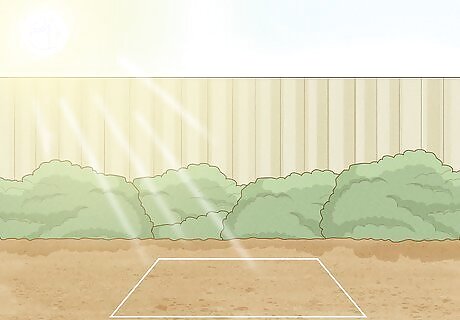
Pick a sunny location to plant. Even though potatoes like cooler weather, they still love full sun, and will do best in an area that gets several hours of light each day. You can also plant potatoes anywhere you like, including directly in the ground or in garden beds.
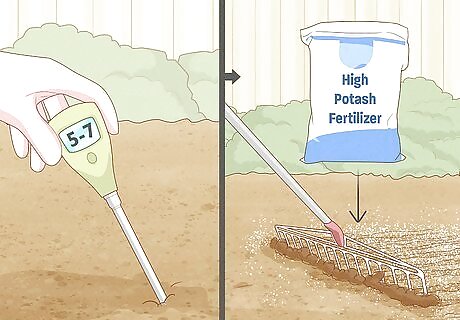
Amend the soil. The best kind of soil for growing potatoes is loose soil that’s slightly acidic. The ideal pH is between 5.0 and 7.0, and you can increase the acidity by tilling aged manure, mature compost, or high-potash fertilizer into the soil. Tilling the soil will also break everything up and ensure the soil is nice and loose for the potatoes.
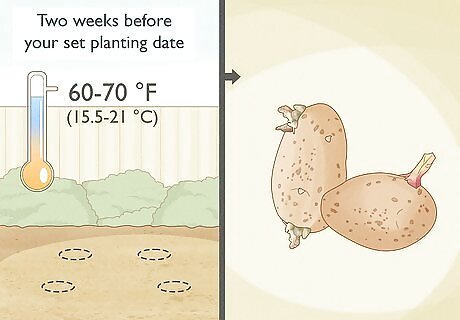
Sprout your seed potatoes. Potatoes will grow fastest when they're grown from a seed potato, which is a potato that has been allowed to sprout. Two weeks before your set planting date, lay out your seed potatoes somewhere that gets plenty of light, and that’s between 60 and 70° F (15.5 and 21° C). Leave the potatoes there in the light to sprout until it’s time to plant. Use small but healthy potatoes for seed potatoes. If your seed potato is larger than a chicken egg, you can cut it in half or thirds. There should be at least two eyes or sprouts per piece. You can grow any variety of potato you like, but make sure you're using spray-free potatoes that haven't been treated with a sprout-inhibitor. This will prevent the potato from sprouting, and you won’t be able to grow a new plant from it.

Dig straight rows in the soil. When the potatoes are sprouted and it’s time to plant, use a shovel or spade to dig 4-inch deep (10-cm) trenches in the garden bed. The rows should be just deep enough to hold the potatoes. Space the rows so they're 3 feet (0.91 m) (91 cm) apart. Potatoes grown in rows in the ground will produce good yields, as long as the soil is of good quality.
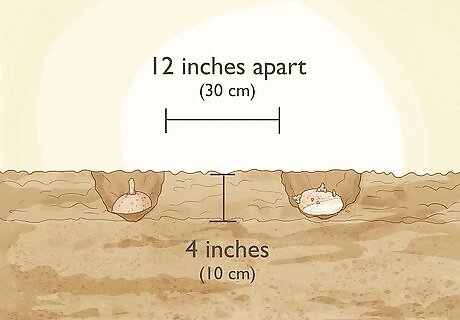
Plant the seed potatoes. Place the seed potatoes directly into the trenches with the sprouts facing upward toward the sky. Space the potatoes 12 inches (30 cm) apart. When you’ve filled the rows with seed potatoes, cover the potatoes with 4 inches (10 cm) of soil.
Caring for the Plants
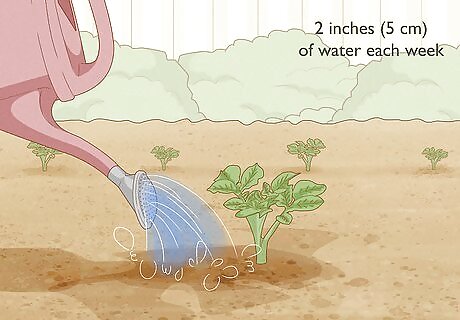
Water the plants regularly to keep the soil moist. Potatoes like plenty of water, so it’s important to keep the soil moist, but not soaking wet, while they grow. Make sure the plants get about 2 inches (5 cm) of water each week, especially when they're flowering. Only stop watering the plants when the foliage starts to turn yellow and die back, as this means the potatoes will be ready to harvest soon.
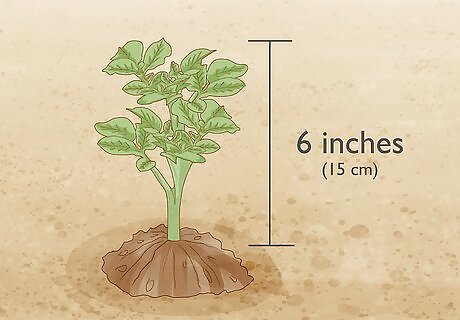
Build up extra soil around the base of the plants as they grow. When the potato plants reach a height of 6 inches (15 cm), add more soil around the base of each plant. This is called hilling, and it will protect the potatoes from sunburn and support the plants as they grow. Hill the potatoes again every time the plants grow another 6 inches (15 cm). Potatoes that are exposed to sunlight produce a toxic chemical called solanine, which appears as a green layer on the outside of the tuber.
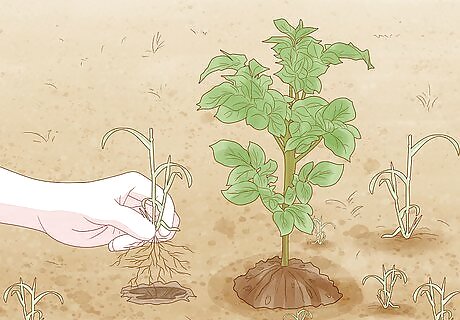
Weed the garden regularly. Potato plants will do better when they don’t have to compete with weeds. As weeds grow up in the garden bed, pull or dig them out by hand to ensure the potatoes get all the nutrients they need.
Dealing with Diseases and Pests
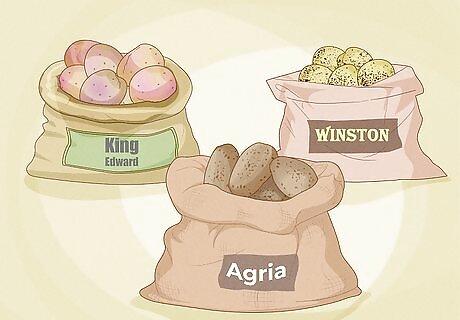
Purchase disease-resistant varieties. To reduce the chances of your potatoes suffering from disease, you can purchase a disease-resistant variety, like Agria, King Edward, or Winston.
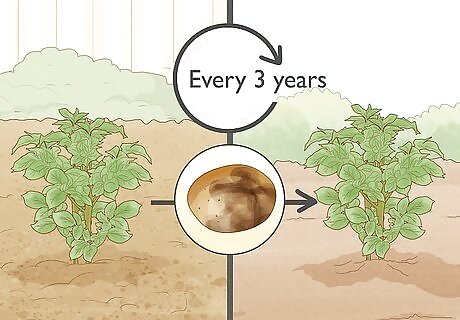
Avoid potato blight by rotating the location of your potatoes every year. Be sure to wait three years before planting potatoes in a previous location. Overcrowding can also be an issue for potatoes, so be sure to give them plenty of space.
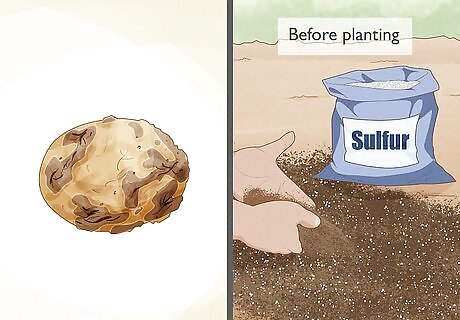
Lower the soil pH to get rid of scab. Scab is a common disease evidenced by legions on the potatoes. Your potatoes may develop scab if the pH of the soil is too high. You can add sulfur to the soil to lower its pH.
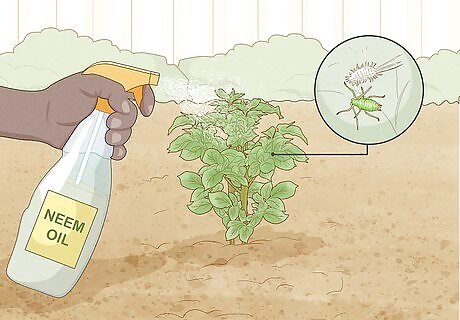
Remove pests by hand or with water. Potato beetles should be picked off by hand. Aphids can be sprayed off with a sharp stream of water. Alternatively, you can remove these pests with a natural insecticide, like neem oil, which can be found at your local garden shop.
Harvesting and Storing Potatoes
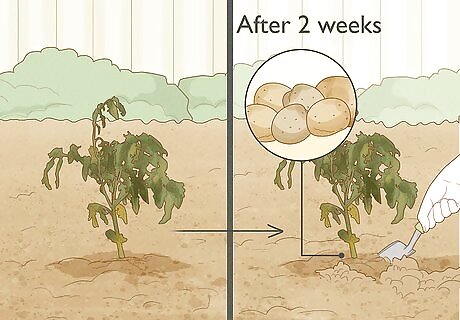
Harvest new potatoes after the plants stop flowering. New potatoes are ones that have been picked before they were allowed to fully develop. When your plants are about 10 weeks old, they’ll start to flower. When flowering stops, wait another two weeks, and then harvest your new potatoes by digging them out of the ground. New potatoes are smaller and have a more tender skin than mature ones. People will often harvest some new potatoes to create more room for the rest to mature.

Cut away the browning foliage when it starts to die back. As the potato plants mature, the foliage will begin to yellow and die as the plants approach the end of their life cycle. When this happens, remove brown foliage with garden shears or scissors. Once the foliage has died, wait another two weeks before harvesting the potatoes.
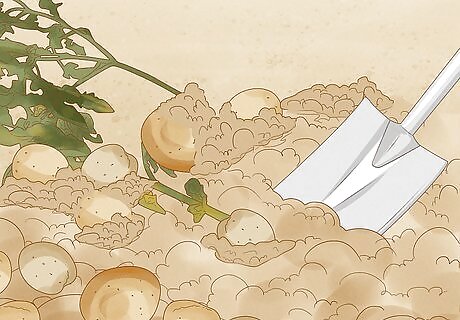
Dig the potatoes out of the ground. Once all the foliage has died and you’ve given the potatoes a couple of weeks to mature, you can dig out the potatoes. Use a spade or small shovel to gently dig down into the soil to unearth the potatoes. This will ensure you don’t puncture or bruise any with the spade. Depending on the type of potatoes you planted, your potatoes will be ready for harvest anywhere between 60 and 100 days from the planting date.

Lay out the potatoes to cure in a cool and dry place. After you dig up the potatoes, transfer them to a garage, covered porch, or somewhere else that’s cool, dry, shaded, and well-ventilated. Leave the potatoes there for at least three days and up to two weeks to cure. This will give the skins time to mature, and help the potatoes keep for longer. The ideal temperature for curing potatoes is between 45 and 60 F (7 and 15.5 C). Do not cure new potatoes, as they should be eaten within a few days of harvesting.
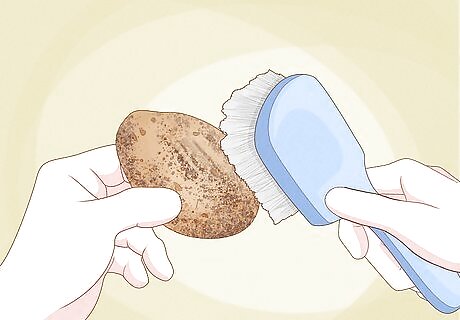
Brush the dirt from the cured potatoes. When the potatoes have had time to cure, use a cloth or vegetable brush to remove excess dirt from the skins. Do not wash the potatoes with water, as this can cause them to spoil faster. Never wash a potato until you're ready to eat it.
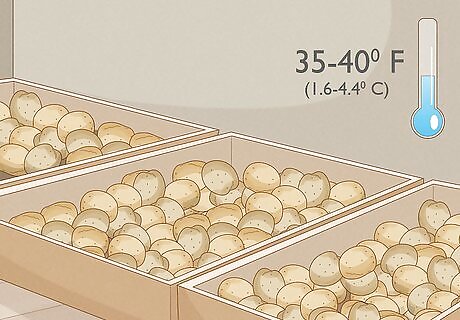
Store the potatoes somewhere cool, dry, and dark. After curing and brushing, transfer the potatoes to burlap or paper bags for storage. Move the potatoes to a root cellar or other place where they’ll be protected from light, heat, and moisture. The ideal temperature for potato storage is between 35 and 40° F (1.6 and 4.4° C). The potatoes should last for several months under these conditions.















Comments
0 comment